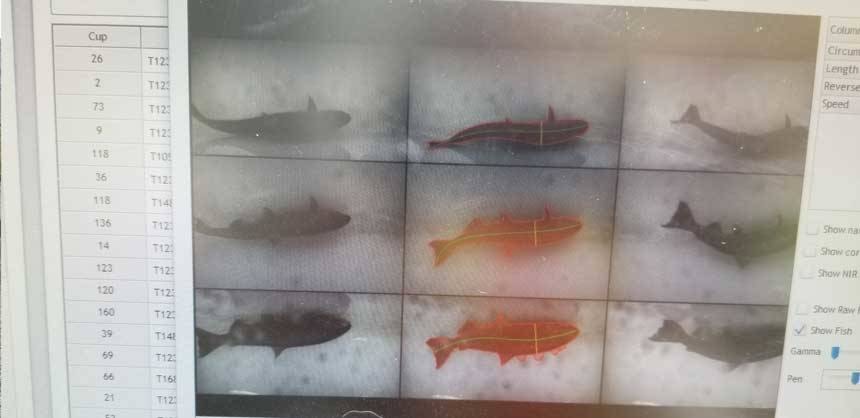Fraser River salmon have begun arriving in larger numbers at the site of the Big Bar landslide.
As of Aug. 5 Fisheries and Oceans Canada (DFO) is reporting 2,176 salmon were detected at the Churn Creek sonar station 40 km upstream of the slide, saying it’s a positive indicator of a successful migration past the barrier.
DFO issued an update of the massive project Aug. 7, which involves the Whooshh Passage Portal, or so-called salmon cannon, and a fleet of trucks to assist the fish as needed.
With work now complete on a higher capacity Whoosh system, consisting of six tubes able to move 15,000 fish 160 metres every 24 hours north of the slide, crews have been focused on improvements and system optimization.
“New filters were installed to reduce sediment in the water supply before it reaches the fine spray misters and other sensitive components,” the DFO update reads. “Crews also added mesh and netting to better guide fish movement within the concrete ladder and the steep pass ramp to reduce incidental harm.”
READ MORE: High tech fish transport system set up to ‘whoosh’ salmon past Big Bar landslide
Other work includes constructing walkways and ramps, improving vehicle and equipment access, and upgrading rock fall protection measures.
The fish passage network is part of ongoing mitigation efforts since the landslide was discovered in late June of 2019, causing 75,000 cubic metres of rock to fall into the river roughly 100 kilometres north of Lillooet, blocking spawning salmon passage into B.C.’s Interior.
South of the site new fish are being counted in the low thousands every day.
The good news follows a month of record-setting water flows that halted the summer salmon runs and forced crews to move and reinstall some of their equipment. Water levels were in the high 10th percentile, a 100 to 120-year event, with some days exceeding volumes ever recorded on the Fraser, DFO said.
READ MORE: Williams Lake river valley flood recovery first phase could cost $2.6 million
Crews have now enhanced their tagging efforts before fish enter the Whooshh system with the goal of better understanding fish movement above the slide site. To date 283 chinook and 100 sockeye have been tagged.
